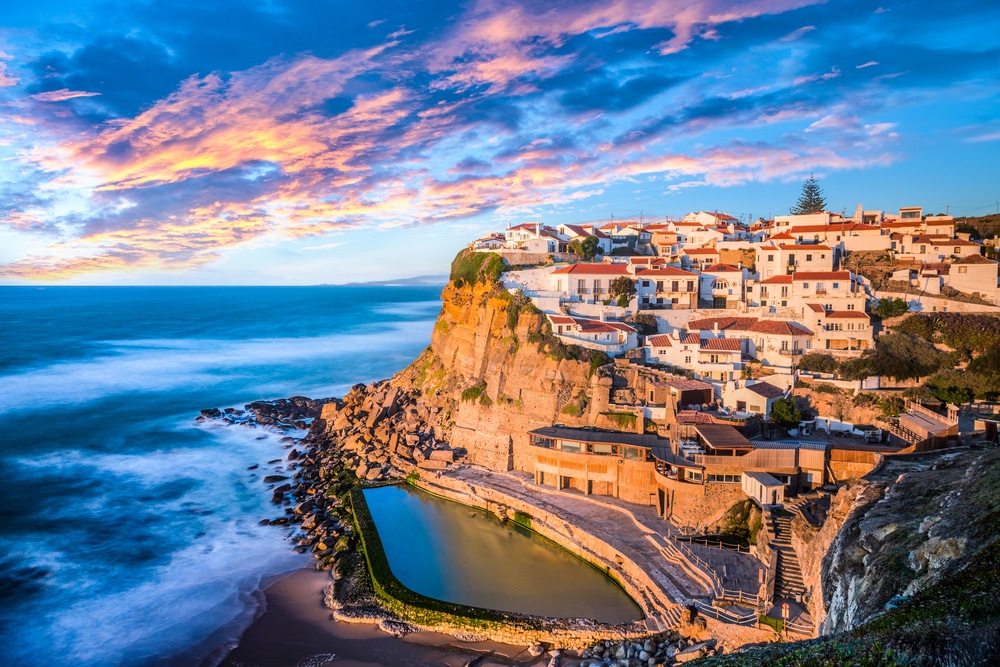Portugal has many tourist classics to offer: from Lisbon to the Algarve. The southern European country also convinces with island worlds in the Atlantic, including Madeira and the Azores. But what exactly distinguishes Portugal’s most popular tourist destinations?
Lisbon – Portugal’s capital as a travel destination
Lisbon, Portuguese capital, unfolds on the west coast of the country – the scenic Atlantic coast. The city’s UNESCO World Heritage Site is worth mentioning in terms of tourism. These include two buildings in particular: the Torre de Belém and the Mosteiro dos Jerónimos. The latter was once built as an important Hieronymite monastery and, like the Torre de Belém, impresses with Manueline architecture. The style is a historical feature of the former Kingdom of Portugal – and contains aesthetic nuances of Gothic and Renaissance. The Torre de Belém, built in this style, is also one of the most important landmarks of the metropolis, it was built in the 16th century. Lisbon’s historic old town looks back on a fascinating and multifaceted history – from its founding under the Phoenicians to the gigantic earthquake in 1755 to its development as a tourist and cultural hotspot of the present.
The historic Castelo de São Jorge, a castle complex from the time of the Moors, still towers over the city today. The cityscape with its historic buildings not far from the Atlantic Ocean exudes a special historical flair that invites you to visit for tourists. The face of the city centre is also characterised by the striking trams of line 28, which are ideal for a special tour of Lisbon . The area around the city also boasts some of the most beautiful beaches in Portugal. A good reason to visit Lisbon.
Algarve – Holiday paradise in Portugal’s south
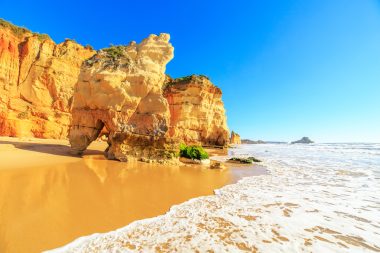
In the far south, the special tourist flair of the Algarve unfolds. Here, not far from the picturesque coastal town of Sagres, is the Cabo de São Vicente, the southwesternmost point of mainland Europe. On sunny days, the atmospheric view of the fascinating blue and the cliffs of the Atlantic coast presents itself here. Among the highlights of the Algarve are the beaches, which make the region a holiday paradise in Europe. From Praia do Amado, popular with advanced surfers, Praia de Benagil with its striking cave formation, to Praia Odeceixe on the west coast, popular with families.
With the Ponta da Piedade, the region around Lagos has a special natural formation: some of the most photogenic cliff formations in Portugal unfold on the headland – a natural landmark of the region. In addition, the Algarve is also suitable for historical sightseeing – here you will find historic buildings such as the Castle of Silves and the Castelo de Loulé. Last but not least, it is worth taking a look at the historic old town of Faro, not far from the Parque Natural da Ria Formosa, which is also one of the most beautiful natural regions in the country. And if you are looking for a contrast to the coastal strips of the Algarve, you can discover the Monchique Mountains here, which is not only popular as an excursion destination, but is also known for its spicy Piri Piri chicken.
Madeira – Portuguese Flower Island
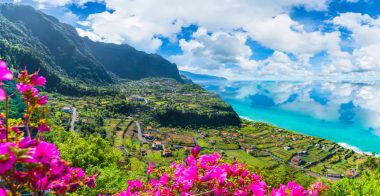
Probably the most famous Portuguese holiday island is Madeira, home to about 250,000 inhabitants. If you want to relax on an island in the middle of the Atlantic, you belong to the tourist target group of Madeira. In addition to its natural beauty, the island is crisscrossed by fascinating water channels: the levadas. Some of the most beautiful hiking trails in Madeira lead along the levadas – a highlight for hiking-loving nature lovers. The capital is Funchal in the south, which owes its name to the fennel that is historically widespread there. The city is also suitable as a tourist destination due to its diverse sights – here you will find the pilgrimage church of Nossa Senhora do Monte and a nationally known botanical and tropical garden. In good weather, the day can be ended pleasantly with a walk along the harbour promenade. Madeira is also considered a hotspot for whale watching due to its special location in the Atlantic. The island is arguably the perfect way to enjoy natural Portugal far away from the mainland. It is not for nothing that Madeira is one of the most popular holiday islands in the Atlantic.
Porto – Tourist highlight in the north of Portugal
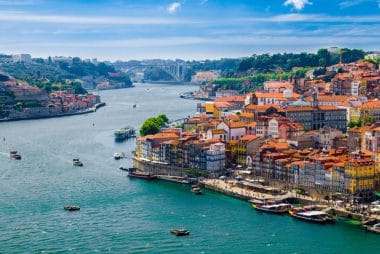
In the north of the country, historic Porto unfolds. The port city is not only the second largest settlement in Portugal after Lisbon, but also an economic and cultural centre of the Portuguese north. Like Lisbon, the city is rich in UNESCO World Heritage sites. Porto’s historic centre has been awarded the coveted award. This is mainly due to the historic port region of Ribeira, which has a scenic waterfront. Thanks to its striking historical buildings, the city is also considered the baroque city of Portugal nationwide. Here you can discover numerous sacred buildings of the striking architectural style.
The city is particularly characterized by its winding alleys, which contribute to the tourist charm. One of the most famous sacred buildings in the city is the Cathedral of Porto, which was begun in the 12th century in the Romanesque style and since then has brought together a mix of Gothic, Baroque and Rococo styles through its various construction phases. Even from afar, the town hall, which was begun in the 20s and completed in the 50s, stands out architecturally – although today it is above all the decorations of the façade that attract aesthetic attention. Like Lisbon, Porto is also worth getting to know the culinary side of the city, which is characterized by seafood such as cod and sardines but also Portuguese bean stew. If you want to get to know the north of Portugal, you should not miss the historic city with its old town and winding alleys.
Azores – island paradise in the Atlantic
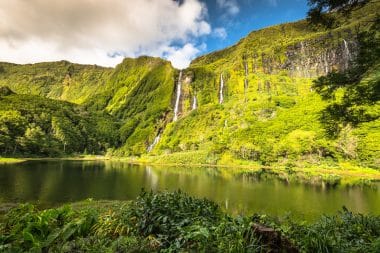
The Azores are formed by nine larger and other small islands. The archipelago in the Atlantic is considered a special natural paradise for all those who want to get to know Portugal far away from the big cities. An important attraction is the main island of São Miguel, which is also the largest island in the Azores.
On the island, for example, lies the caldera of the Sete Cidades volcano, in which today a lake with a scenic green environment unfolds. In São Miguel , the capital of the region is also waiting: Ponta Delgada. There is not only a distinct harbour district here, but also numerous baroque and Manuelite buildings that encourage you to visit. The Ponta do Pico is also the highest mountain in Portugal, a stratovolcano, located in the Azores. In good weather, the 2351-metre-high elevation is a photogenic highlight even from afar. Last but not least, the Azores score with multifaceted lake, volcanic and coastal landscapes, which make the archipelago one of the most beautiful regions in Portugal.


